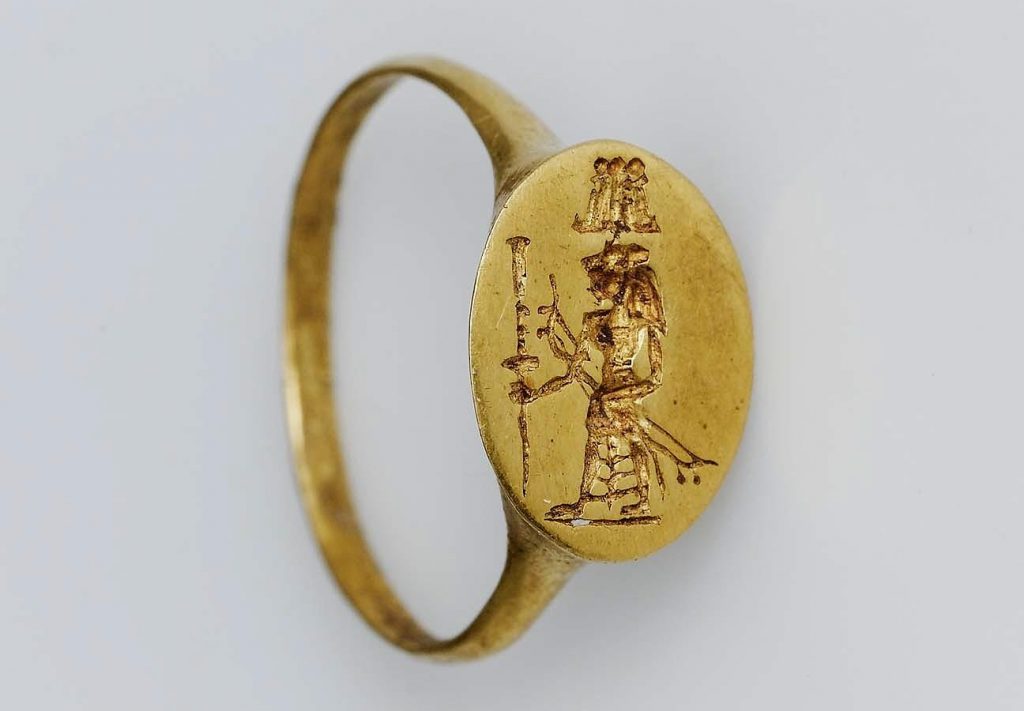Akhenaten: Artistic Development in the Amarna Period
Amenhotep IV, widely recognized as the notorious Akhenaten, was the enigmatic “heretic” pharaoh who ruled during the Eighteenth Dynasty.
Maya M. Tola 20 July 2023
The ancient African civilization of Nubia thrived along the banks of the Nile, encompassing present-day Sudan and southern Egypt. Nubia gained renown for its vast reserves of gold, which fueled a legacy of exceptional gold craftsmanship that rivaled the skill of both the Etruscans and the Egyptians. Nubian gold was produced by goldsmiths who were revered for their meticulous attention to detail and their ability to create intricate designs, showcasing their extraordinary artistry and expertise.

Ram’s Head Earring, ca. 550 to 500 BCE, Museum of Fine Arts, Boston, MA, USA.
Nubia boasts a complex and diverse history that frequently intersected with that of Egypt, especially during the Kingdom of Kush, a profoundly significant era in Nubian history that emerged around 800 BCE. During this time, the Kushite rulers conquered and unified Upper and Lower Nubia, eventually expanding their influence into Egypt and establishing the 25th Dynasty, also known as the Nubian Dynasty.
The close proximity between Nubia and Egypt fostered vibrant commercial and cultural exchanges but also fueled conflicts. Notably, Nubians even held dominion over Egypt for approximately a century, during which they promoted their own cultural practices while incorporating elements of Egyptian traditions. Nubia made substantial contributions to the development of ancient Egypt while simultaneously maintaining its distinct cultural identity and artistic traditions.

Necklace with Human and Ram’s-Head Pendants, ca. 270 to 50 BCE, Museum of Fine Arts, Boston, MA, USA.
The development of Nubia as a distinctive culture unfolded over a span of approximately 3000 years, from around 2000 BCE to 350 CE. Its strategic location played a pivotal role in establishing Nubia as a vital trade link between the Mediterranean world and the African interior.
Nubia facilitated a significant volume of trade, encompassing a wide range of goods, particularly luxury items like exotic animals and artifacts made of ivory and gold. The exposure to diverse cultures as well as trade commodities sparked the curiosity and ingenuity of Nubian jewelers, who ventured into experimenting with unconventional materials and designs. As a result, Nubia became renowned as a hub of artistic, religious, and political innovation, and established an enduring legacy of personal adornment as a manifestation of power and identity that continues to resonate even today.

Gold Signet Ring, ca. 50 BCE to 40 BCE, Museum of Fine Arts, Boston, MA, USA.
The abundance of gold resources in Nubia played a pivotal role in shaping the economic landscape, as it became a highly sought-after commodity. The extensive trade in Nubian gold not only fueled economic growth within Nubian societies but also influenced and shaped the power dynamics of ancient civilizations in the region.

Harpokrates Bracelet, ca. 270 BCE to 320 CE, Museum of Fine Arts, Boston, MA, United States.
Gold held significant economic and cultural value for the ancient Nubians and served multiple purposes. The ancient Nubians highly valued gold for its aesthetic appeal and rarity, as well as its non-tarnishing quality. It was meticulously crafted into jewelry and other ornamental objects, symbolizing beauty and luxury.
Additionally, gold played a vital role in religious practices, where it was used in sacred ceremonies and rituals as an offering to deities.
The possession of gold and the ability to adorn oneself with gold jewelry were indicators of wealth and social standing within Nubian society. The display of gold not only conveyed an individual’s affluence but also their influence and elevated status.

Double Hathor head earring (Detail), ca. 90 BCE to 50 CE. Museum of Fine Arts, Boston, MA, United States.
The Nubian mastery of gold crafting became an integral part of their cultural identity, with a remarkable advancement in jewelry making during the Meroitic Period, spanning from the third century BCE through the fourth century CE. During this era, Nubian craftsmen experimented with advanced techniques, resulting in the creation of elaborate and highly refined gold jewelry pieces.
Nubian goldsmiths developed and perfected various techniques, including filigree, which involved weaving strands of gold thread into intricate lacy patterns. They also excelled in granulation, creating decorative patterns using small granules of gold on a surface. Additionally, Meroitic jewelers showcased their expertise in champlevé enameling, a technique where areas carved out of the metal backing were filled with powdered glass that fused upon heating. Remarkably, these craftsmen employed techniques that would not be reinvented in Europe for another thousand years, highlighting both the innovation and sophistication of Nubian goldsmithing.
Nubian gold jewelry often featured a range of motifs, including geometric shapes, lotus flowers, animals, and symbolic representations of fertility, protection, spirituality, and eternal life. While there was evident influence from Egyptian iconography, Nubian motifs possessed a distinguishable aesthetic, reflecting their unique cultural heritage.

Gold and Carnelian Bracelet, ca. 90 BCE to 50 CE. Museum of Fine Arts, Boston, MA, United States.
In recent times, the region has once again emerged as a significant producer of gold, carrying on the enduring legacy of ancient Nubia’s rich gold resources. Sudan has particularly risen as a prominent producer, earning recognition as the third-largest producer of gold in Africa and the tenth-largest producer globally.
DailyArt Magazine needs your support. Every contribution, however big or small, is very valuable for our future. Thanks to it, we will be able to sustain and grow the Magazine. Thank you for your help!